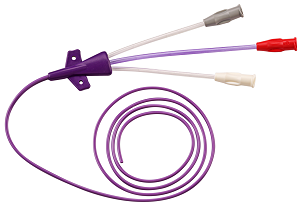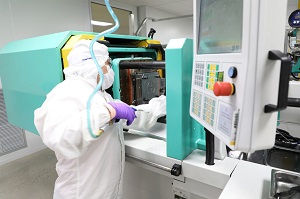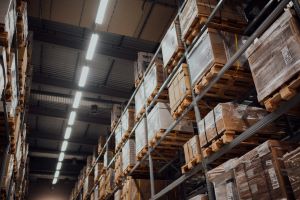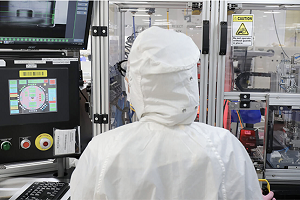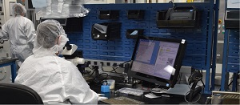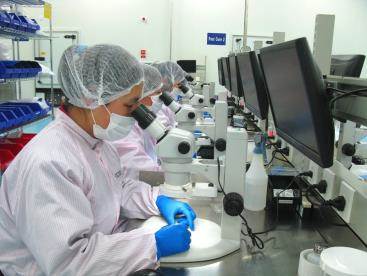Read how FMI's global strategies have helped expand their business.
1/22/14
CHICAGO— From the outside, it's hard to imagine that the Flexan Corp. facility in an unassuming neighborhood in Chicago serves as the headquarters for a thriving global enterprise.
From the outside, it's hard to imagine that the Flexan Corp. facility in an unassuming neighborhood in Chicago serves as the headquarters for a thriving global enterprise.
But the 65,000-sq.-ft. complex not only houses production for the Flexan commercial and industrial molding business, but it also serves as home base for a business that includes the FMI Inc. medical components subsidiary in nearby Elk Grove Village, Ill., and a growing presence in China.
"This location is our headquarters," said Scott Severson, Flexan CEO and one of three partners who own Flexan and FMI. "Some of our most important resources are having great talent. We need sophisticated finance and accounting talent, sophisticated engineering and chemistry talent, and we need people who are capable of supporting a global sales network. Chicago's a great city for those types of talented people."
Flexan was founded in 1946 by the Lilleberg brothers as a family-owned business. It added the FMI unit in 1989 to make silicone medical components geared toward long-term implantable devices. And in 2004 it opened up shop in China, first on the Flexan side of the business. It is now making FMI products as well.
Severson—son-in-law of one of the founders—joined in 1977 and has been on board ever since. In 2010, though, some of the second-generation family members wanted to retire. Severson wasn't ready to call it quits, so he recruited longtime company veterans Bruce Cohen and Frank Sullivan to join him as partners in owning Flexan/FMI.
"We're still a family-owned business—it's just different families," Severson said.
Cohen, who serves as Flexan president, joined the firm in 1991 as a salesman. He became sales manager in 1998, a vice president in 2000 and in 2004 went to Suzhou, China, to start that operation. He also became a small minority owner in Flexan at that time.
Sullivan came on board in 1994 after working for another silicone product maker in the medical market. He became FMI vice president in 2004 and president of the unit in 2007.
"Frank and Bruce and I stepped up and bought out the other family members who were looking to retire," Severson said. "It sort of gave us a renewed vigor, a more aggressive forward-looking strategy, and it's worked out well. When the opportunity came to either invest more or retire myself, it was pretty easy to say these were the key managers. ... It was a natural to get our best people involved as a privately owned company."
Moving into China
 By far the biggest leap of faith in its nearly seven decades as a company was the decision to set up shop in China.
By far the biggest leap of faith in its nearly seven decades as a company was the decision to set up shop in China.
"That venture turned us into a global supplier," Severson said. "I think it changed our whole company, our attitude, our work ethic. We became a 24-hour-a-day global operation supplying European and North American customers that have plants there.
Flexan prides itself on anticipating customer needs, and in 2003 the firm was exporting components to 17 or 18 countries.
But the No. 1 destination was China, Cohen said.
"It was obvious that companies didn't go to China to assemble parts intending to buy the components from North American suppliers," he said. "If we wanted to succeed, we had to go over there."
The road to China began when customers in the hearing aid market—one of its biggest sectors—started to set up in China because they hadn't figured out how to automate assembly of hearing aids. Customers started looking for better prices, and there was a push to start buying components out of China. "We found it hard to give our customers an answer to that," Cohen said.
In 2002, one of its customers asked Flexan to procure parts from China. They aided Flexan in sourcing and other logistics, and the Chicago-based company began buying parts from China for customers in North America.
Cohen said it didn't take long to figure out that such a supply chain had too many entities trying to make a profit. "We knew that if we wanted to grow our business there, we had to be able to control it ourselves and take the middle people out of it so we could offer competitive pricing," he said.
So the firm started to investigate starting a privately owned company in China, and Cohen was given the reins to make it happen. He called it the best project he likely will have in his career, one that set Flexan on a new path.
"That business helped change the trajectory of the company," he said. "We became a different company when we did that. We managed ourselves differently and focused differently. We called it "taking bigger swings.' Bigger projects came our way."
Of course, the company had to remain true to its core values and philosophies that had made it a successful U.S. firm, the officials said. That meant focusing on niches in areas where it had expertise and manufacturing top quality products.
"I would say that is one of the guiding principles when Bruce went over to establish the business—that we wanted to meet or exceed the standards that our customers had come to expect from us," Severson said.
Since its inception, the operation has been prosperous. Nearly half of the firm's 500 employees are in the Chinese operations, and about a third of the company's $35 million to $40 million in annual sales originate there.
It also helped Flexan thrive during the recession. "Some of our core markets, especially here in the Chicago facility, suffered some with the recession, but as a business we grew right through that," Cohen said.
The Chinese operation also helps Flexan offer its customers risk mitigation, Cohen said, meaning it can be both the North American and Asian supplier of rubber components.
Because of the success with its Flexan area of expertise, the owners first added a clean room in the 90,000-sq.-ft. facility to make FMI goods and now are in the middle of an expansion that includes a new leased, 55,000-sq.-ft. factory. The industrial/commercial side of the operations are being moved to the new plant—located about 1.5 miles away from the first site—along with the mixing and warehousing functions.
The industrial production plant will now boast 66 compression, transfer and liquid silicone rubber presses, while the clean room houses six presses for FMI.
FMI manufacturing will remain at the original facility, because of the need to revalidate products if the clean room would be moved to a new building, Cohen said.
Still thriving in Chicago
 Despite all the growth for Flexan and FMI in China, that does not mean the facilities and business in Chicago are being ignored. Severson said the firm is investing each of the three business units, with funds going to manufacturing technology, IT upgrades and other needed areas, Severson said.
Despite all the growth for Flexan and FMI in China, that does not mean the facilities and business in Chicago are being ignored. Severson said the firm is investing each of the three business units, with funds going to manufacturing technology, IT upgrades and other needed areas, Severson said.
"We're still a North American manufacturer, and we have no intention of having that change," Cohen said. "We are spending a lot of time focusing on what we call the commercial and industrial marketplace, and what niches do we belong in and how do we service those niches."
The Flexan business is diverse, with no industry making up more than 15-20 percent of revenues, he said. "But we're consistent in what we do in that the things we tend to manufacture are functional components. The part has to perform a very specific function for our customers to make it work."
It normally specializes in making components with difficult geometries, and also excels in bonding rubber to metal and plastics.
Besides hearing aids and other hearing technology goods, Flexan has significant presences in pneumatics, hydraulics, food, water, dairy, off-road, heavy truck and military.
The Chicago headquarters site employs 175, and while there is no room for a physical expansion, Cohen said it can do more there by being leaner and more efficient.
Business for FMI's U.S. operation has doubled in the last four years. It employs about 100, has doubled its technical staff in recent years and houses 20 presses at three buildings totaling about 15,000 to 20,000 square feet, Sullivan said.
Some competitors tried to enter the market during the recession, but the market is difficult to enter, he said, because of the high quality demands for implant-grade goods and the variety of validations needed.
"It requires incredibly precise execution," Severson said. "There isn't any room to make a mistake. ... Average is not tolerated. Medical device and implant grade components have to be excellent."
The success of the operations is tied directly to the relationships the firm has with its customers, allowing it to work from concept to commercialization on many products. "We put in resources and service here to help our customers through the entire product lifecycle," Sullivan said.
Added Cohen: "You earn the right to be leaned on by doing a good job and helping them with a project. Then they start to recognize there is value, expertise and knowledge in their supply base, and they start to tap into it. Our chemists know more about rubber materials than our customers. If they explain to us the environment they need to be in, we can direct them to what materials they need."
The three owners make sure the businesses in the U.S. and China work closely together. "We're really focusing on being an enterprise and being one business with one set of goals and one set of rules and one set of objectives," Cohen said.
They benefit from being a private enterprise, they said, where decisions can be made with long-term goals in mind, rather than having to chase quarterly earnings for Wall Street. "Part of our mission is if it fits within the scope, then you pursue it," Sullivan said.
Five years from now, Cohen said the aim is to double the size of the business. "That's consistently our goal," he said. "We've got good things going on. There's no reason to think that's not a realistic goal."
Severson, though, said such goals will come within the core values of the enterprise, with focus continuing on the firm's character, quality and integrity. "We leverage successful relationships and find customers that want us to do more, and that's where we intend to invest," he said.
Read "Chinese Plant Helps Flexan Thrive in Global Economy," written by Bruce Meyer in the RuberNews.com, November 2013
View website




